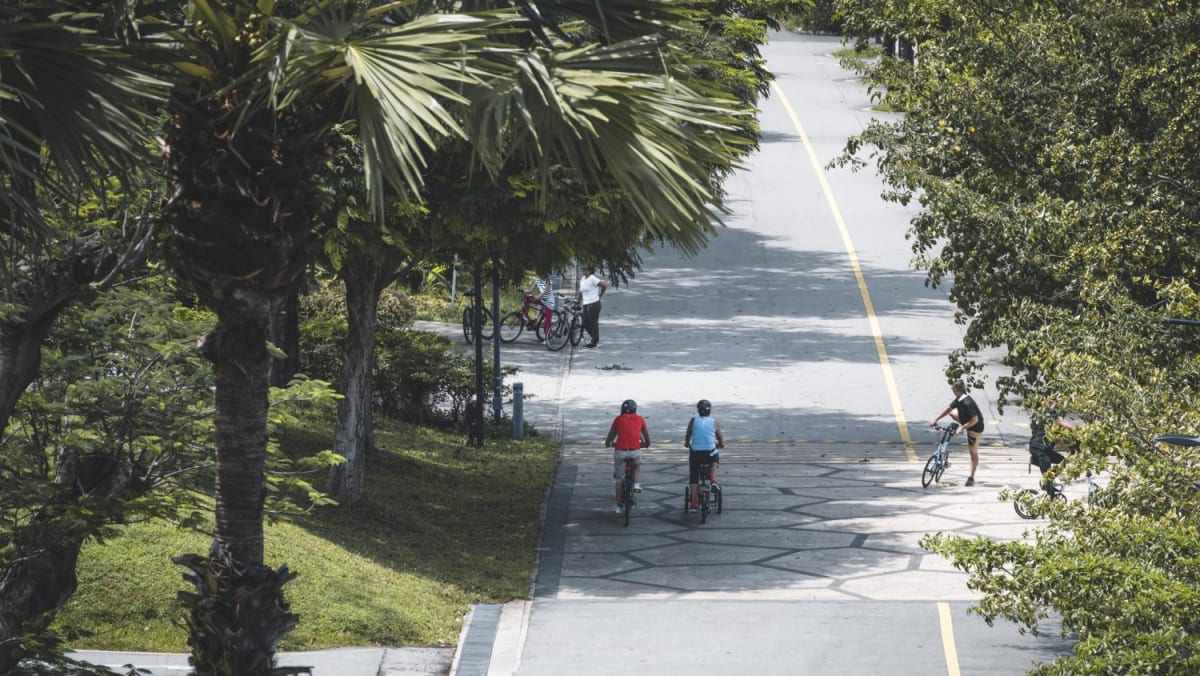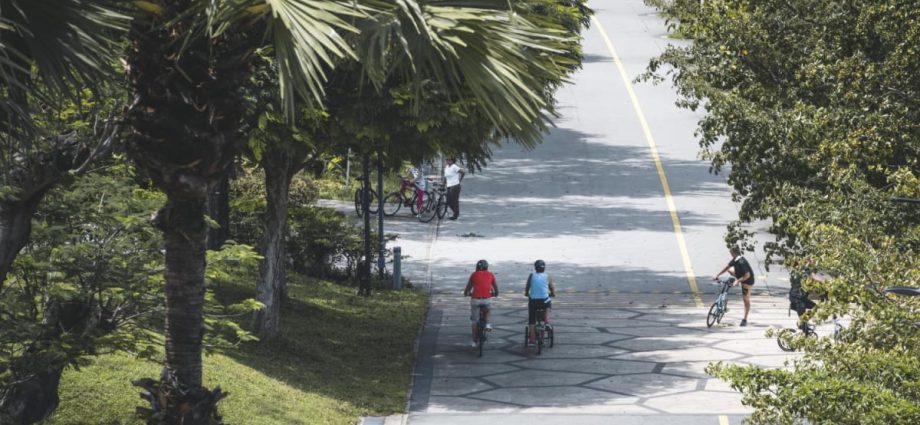
WORK INDOORS, SEND REMINDERS: COMPANIES
Two construction companies said they already have hot-weather measures in place, but they also take into account the new advisory service.
Hitomo Construction said it schedules indoor work activities when the heat risk is high. This is the same arrangement the company has for rain, which was in place even before the introduction of the heat stress advisory, said chief executive officer Serene Pan.
Workers may start earlier in the day when the temperature is cooler. They also get more water breaks and the company will provide drinks with electrolytes, said Ms Pan, adding that workers can also inform the site manager if they are feeling uncomfortable.
While heat is an “unavoidable factor” for construction projects, “workers’ safety comes first”, she said.
Similarly, United Tec Construction already had its own heat stress measures but after the advisory service was launched, it installed a temperature monitoring system and records temperatures at fixed periods, said senior corporate manager Eric Tan.
Employees working under direct sunlight will be rotated to minimise exposure. Work will be rescheduled as a “last resort”, added Mr Tan.
Delivery platforms said they send reminders to riders during periods of hot weather.
Grab uses in-app reminders to alert riders to the heat advisory risk, while foodpanda said it sends reminders regardless of the advisory, depending on weather conditions.
“Given that individuals’ heat tolerance varies, we will continue to send out reminders when the weather gets hot – and this can include days when the heat stress advisory is not issued,” said a spokesperson.
Deliveroo said it provides water for riders at its delivery-only kitchens and encourages merchants to offer drinks to riders in hot weather.
SCHOOLS, SAF ALIGNED WITH HEAT STRESS ADVISORY
Existing guidelines for schools are generally already aligned with the heat stress advisory, said the Ministry of Education (MOE).
The guidelines include minimising outdoor physical activities between 10.30am and 3.30pm, when heat and ultraviolet light levels are generally higher, said the Education Ministry in response to CNA queries.
“Schools also have the autonomy to determine the localised measures that can best help their students manage the heat, as weather and environmental conditions could vary across schools,” it said.
For example, schools can allow students to wear different uniforms. When the heat stress risk is high, schools can also conduct physical activities in sheltered or indoor spaces, implement more frequent breaks or reschedule activities to cooler parts of the day, said MOE in the statement.

